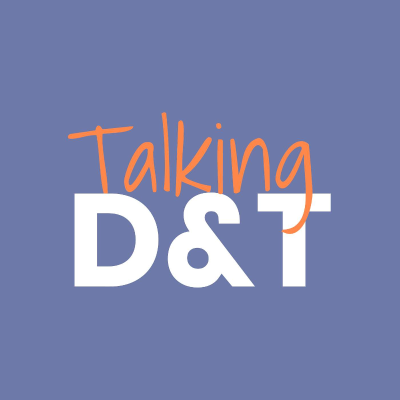
Talking D&T
Englisch
Gratis en Podimo
Kostenlos hören bei Podimo
Starte jetzt und verbinde dich mit deinen Lieblingspodcaster*innen
- Vertraut von über 1 Mio. deutschen Hörer*innen
- Über 1.000 lokale Podcasts und Shows – nur bei Podimo
- Keine Zahlung nötig
Mehr Talking D&T
Talking D&T is a podcast about design and technology education. Join me, Dr Alison Hardy, as I share news, views, ideas and opinions about D&T. I also talk about D&T with teachers, researchers and academics from the D&T community.The views on this podcast are my own and of those I am interviewing and are not connected to my institution. Much of the content is work in progress. As well as talking about D&T, I use it to explore new ideas and thoughts related to D&T education and my research, which are still embryonic and may change. Consult my publications for a reliable record of my considered thoughts on the topic featured in this podcast.This podcast is independently produced and funded by Dr Alison Hardy. It is not affiliated with, endorsed by, or representative of Nottingham Trent University. All views expressed are those of the host and guests and do not reflect the views of the University.Podcast music composed by Chris Corcoran (http://www.svengali.org.uk)
Alle Folgen
221 FolgenHow A Senior Leader Put D&T At The Heart Of Three SEMH Schools
Send me a message. [https://www.buzzsprout.com/twilio/text_messages/288393/open_sms] What happens when a senior leader who grew up in the workshop helps design three SEMH schools from the ground up? In this episoode, I sit down with Paul Quinn to unpack a bold, practical vision for Design and Technology that prioritises access, safety and pride in making. Instead of chasing every shiny gadget, Paul explains why reliable hand tools and a hard-working laser cutter deliver outsized gains for learners who need quick wins, clear routines and visible success they can take home. We talk about Paul’s journey from mainstream D&T to leadership, exploring how accountability pressures squeezed creative subjects and why specialist provision offered a chance to redefine success. He shares the realities of equipping new workshops, including what paid off, what didn’t, and how the team kept the focus on learning rather than kit. Expect straight talking on 3D printers, the value of repetitive processes for regulation, and why textiles—introduced with careful safety planning—unlocked confidence for many students. Throughout, we return to the simple truths that make D&T transformative in SEMH settings: short, well-structured lessons; culturally relevant projects; heavy scaffolding with teacher prep; and outcomes that look and feel good. When students are welcomed into spaces they were once excluded from, behaviour shifts, confidence grows and qualifications follow. This is practical pedagogy you can apply tomorrow—design for success, choose tools that fit your learners, and keep the relationship at the centre. Subscribe for more conversations at the intersection of D&T, inclusion and real-world making, and share this episode with a colleague who’s rethinking their workshop. Leave a review to help others find the show, and tell us: what tool would you buy, and what would you skip? Support the show [https://www.buzzsprout.com/288393/support] If you like the podcast, you can always buy me a coffee [https://ko-fi.com/alisonhardy] to say 'thanks!' Please offer your feedback about the show or ideas for future episodes and topics by connecting with me on Threads @hardy_alison [https://www.threads.net/@dralisonhardy] or by emailing me. If you listen to the podcast on Apple Podcasts, please take a moment to rate and/or review the show. If you want to support me by becoming a Patron click here [https://www.patreon.com/alisonhardy]. If you are not able to support me financially, please consider leaving a review on Apple Podcasts or sharing a link to my work on social media. Thank you!
Designing For SEMH: Teaching D&T With Care
Send me a message. [https://www.buzzsprout.com/twilio/text_messages/288393/open_sms] A noisy workshop can feel like a storm, but what if the path to learning starts with rhythm, not rush? We sit down with D&T teacher Ailis Brown from a specialist SEMH school in Leeds to unpack how safety, trust, and regulation turn short lessons into meaningful progress. From clocks and board games to careful joinery, Ailis shows how a flexible bank of projects meets pupils where they are and gently moves them forward. We compare mainstream pressures with the reality of SEMH: small classes that still stretch a teacher’s attention, 40-minute slots that yield 15–20 minutes of true learning, and the need to plan projects that run in parallel because attendance and readiness vary. You’ll hear how TAs act as experts on the child while the subject teacher guards the craft, and why writing individual objectives on the board can become a quiet briefing that keeps everyone aligned. The standout insight is rhythm: repetitive tasks like sanding and filing act as regulation tools, helping students steady their breathing, settle their senses, and rejoin cognitive work without confrontation. Ailis is candid about shifting aims—from grade targets to life readiness—and honest about the moral weight of results-driven systems. We explore practical strategies for mainstream teachers supporting students with SEMH needs: build calm routines, reduce waiting, prepare fallback tasks that still feel purposeful, and remember the mantra, “you can’t fight chaos with chaos.” Expect takeaways you can try tomorrow, along with a renewed sense that design and technology isn’t just about products; it’s about giving young people a safe place to practise patience, precision, and pride. If this conversation helped you rethink your workshop or classroom, subscribe, share it with a colleague, and leave a review so others can find it. Have thoughts or a story to add? Send a voice memo via Speakpipe or email us—links in the show notes. Support the show [https://www.buzzsprout.com/288393/support] If you like the podcast, you can always buy me a coffee [https://ko-fi.com/alisonhardy] to say 'thanks!' Please offer your feedback about the show or ideas for future episodes and topics by connecting with me on Threads @hardy_alison [https://www.threads.net/@dralisonhardy] or by emailing me. If you listen to the podcast on Apple Podcasts, please take a moment to rate and/or review the show. If you want to support me by becoming a Patron click here [https://www.patreon.com/alisonhardy]. If you are not able to support me financially, please consider leaving a review on Apple Podcasts or sharing a link to my work on social media. Thank you!
"You're going to let me use THAT?" - Empowering special needs students in D&T
Send me a message. [https://www.buzzsprout.com/twilio/text_messages/288393/open_sms] Nicola Brown shares her experience teaching design and technology at Springwell Leeds North, an SEMH school catering to students aged 7-16 with social, emotional, and mental health needs. She discusses how building relationships, establishing micro-routines, and adapting teaching approaches helps students thrive in a subject that offers unique opportunities for personal development. * Working with SEMH students requires understanding dysregulation and supporting emotional regulation * Key Stage 2 (ages 7-10) sessions focus on basic skills like using scissors, threading, and completing small projects * Key Stage 3 students access a full workshop with power tools, building trust and respect * Level 2 Construction and Arts Award qualifications are offered to Key Stage 4 students * The school practices early transitions to reduce anxiety about the new school year * Misconceptions about special schools are challenged - "it's just being in the right place for you at the right time" * D&T education creates meaningful progression pathways to further education and employment * Small class sizes (10 students with 3 adults) and specialized support enable personalised learning Support the show [https://www.buzzsprout.com/288393/support] If you like the podcast, you can always buy me a coffee [https://ko-fi.com/alisonhardy] to say 'thanks!' Please offer your feedback about the show or ideas for future episodes and topics by connecting with me on Threads @hardy_alison [https://www.threads.net/@dralisonhardy] or by emailing me. If you listen to the podcast on Apple Podcasts, please take a moment to rate and/or review the show. If you want to support me by becoming a Patron click here [https://www.patreon.com/alisonhardy]. If you are not able to support me financially, please consider leaving a review on Apple Podcasts or sharing a link to my work on social media. Thank you!
Beyond Empathy: What the V&A's Design and Disability Exhibition Taught Me
Send me a message. [https://www.buzzsprout.com/twilio/text_messages/288393/open_sms] A museum floor changed underfoot and so did my thinking. After a visit to the V&A’s Design and Disability exhibition, I came home energised and unsettled—in the best way—and unpack how inclusive design moves from a nice‑to‑have to the engine of real innovation and dignity. It caused me to question a stubborn myth: that able‑bodied designers solve problems for others. The stories on display point to something richer—design with, led and instigated by Disabled people, where everyday hacks and tools carry more power than glossy manifestos. I connect those moments to our work in D&T education, including a new chapter by Debi Wynn on inclusion in and inclusion through design and technology. I talk about how accessibility has driven mainstream breakthroughs, like multi‑touch interfaces born from hand pain, and why policies such as the plastic straw ban can miss the mark when they ignore lived reality. Activism enters the frame too—kerb cuts, tactile paving, and accessible transport happened because people organised, pushed, and redesigned the rules. Hopefully my chatter is practical and provocative: co‑design over token empathy, user research that doesn’t "other" people, modular solutions that embrace edge cases, and assessment that treats inclusion as a core quality attribute. I also share what fell short—the exhibition book that couldn’t carry the feelings home. If you care about design that serves everyone, and classrooms that teach students to lead with inclusion, you’ll find ideas here to test tomorrow. Enjoyed the conversation? Subscribe, leave a review to help others find the show, and share it with your D&T community. Got thoughts or a story to add? Send a Speakpipe voice note or email—links in the show notes. Support the show [https://www.buzzsprout.com/288393/support] If you like the podcast, you can always buy me a coffee [https://ko-fi.com/alisonhardy] to say 'thanks!' Please offer your feedback about the show or ideas for future episodes and topics by connecting with me on Threads @hardy_alison [https://www.threads.net/@dralisonhardy] or by emailing me. If you listen to the podcast on Apple Podcasts, please take a moment to rate and/or review the show. If you want to support me by becoming a Patron click here [https://www.patreon.com/alisonhardy]. If you are not able to support me financially, please consider leaving a review on Apple Podcasts or sharing a link to my work on social media. Thank you!
Bridging Art & Design and D&T: Values, Overlaps, and Why Differences Matter
Send me a message. [https://www.buzzsprout.com/twilio/text_messages/288393/open_sms] Ever been told art and design and technology are basically the same because they share the word “design”? Let’s test that claim with real data and grounded classroom experience. In this episode I unpack how teachers and stakeholders describe the value of D&T and the value of art and design, then draw a clear map of where they overlap, where they diverge, and what leaders risk when they blur them into one. First, I outline five widely reported value themes for D&T: transferable skills, careers and the economy, the human–technology relationship, making and creating, and creative and critical thinking. These insights come from a larger, validated body of research and speak to the discipline’s focus on users, systems, materials and evidence through iterative making. Then we contrast early qualitative findings for art and design: career preparation, societal impact, skills for life, and creativity and expression. Here, empathy, cultural awareness and personal voice take centre stage, with a strong link to creative industries, innovation and sustainability. The conversation surfaces a simple truth: both subjects champion creativity and problem solving, yet each serves a distinct purpose that deserves protection. I share practical ways to collaborate without erasing identity: agree non‑negotiables for cross-teaching, and design joint projects where D&T’s functional rigour and art’s expressive depth enrich each other rather than compete. This is a toolkit for faculties, middle leaders and senior teams who want the benefits of a shared banner without collapsing two powerful traditions into one bland compromise. If your timetable or staffing model pushes subjects together, this guide helps you hold the line—respectfully, clearly and with evidence. Got thoughts or examples from your school? Add your voice to the ongoing survey, share the episode with your faculty, and help us build a richer, more rigorous picture of what these subjects offer. If you find value here, subscribe, leave a review, and pass it on to colleagues who care about getting design and the arts right for young people. Link to the survey: https://bit.ly/Valueofdesigned [https://bit.ly/Valueofdesigned] Support the show [https://www.buzzsprout.com/288393/support] If you like the podcast, you can always buy me a coffee [https://ko-fi.com/alisonhardy] to say 'thanks!' Please offer your feedback about the show or ideas for future episodes and topics by connecting with me on Threads @hardy_alison [https://www.threads.net/@dralisonhardy] or by emailing me. If you listen to the podcast on Apple Podcasts, please take a moment to rate and/or review the show. If you want to support me by becoming a Patron click here [https://www.patreon.com/alisonhardy]. If you are not able to support me financially, please consider leaving a review on Apple Podcasts or sharing a link to my work on social media. Thank you!

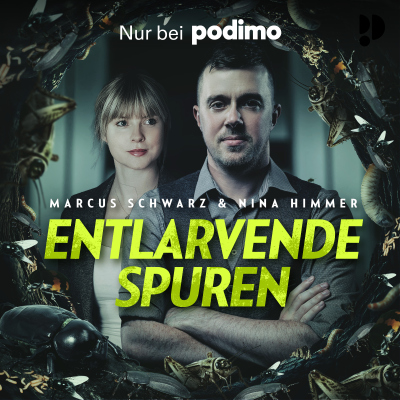


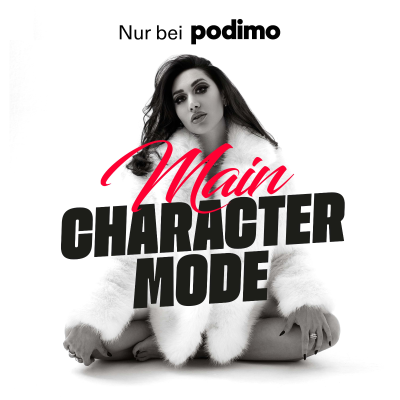
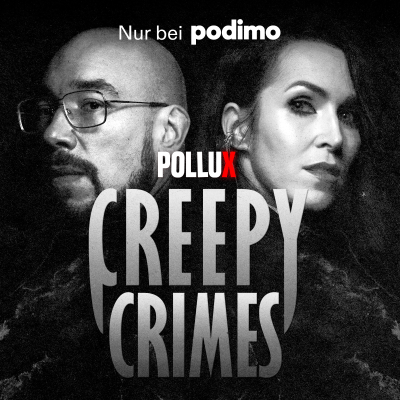





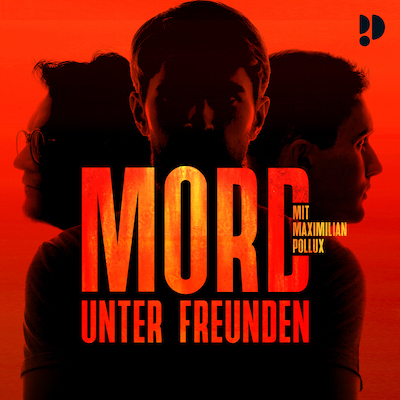
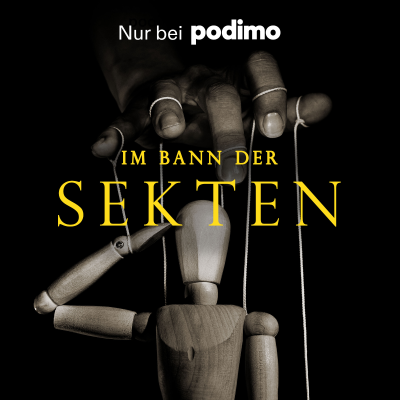


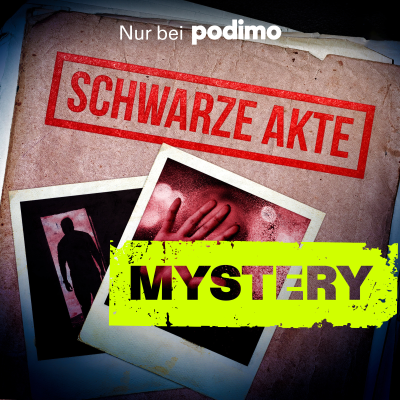



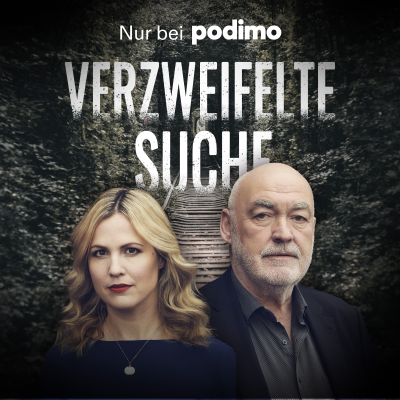
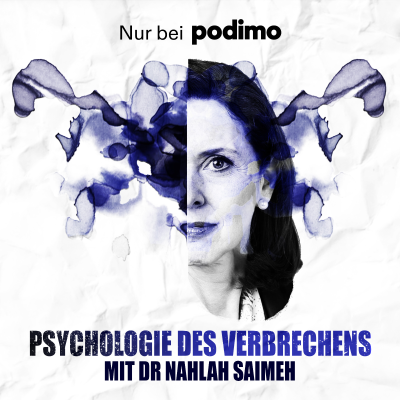




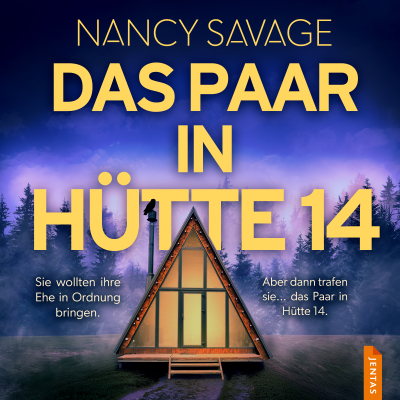








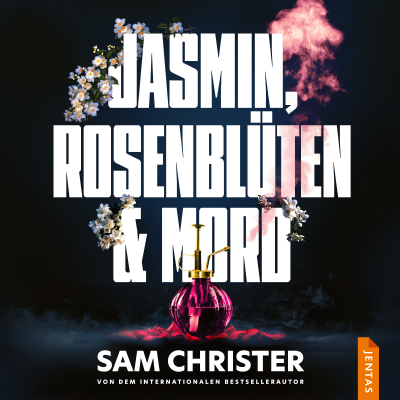
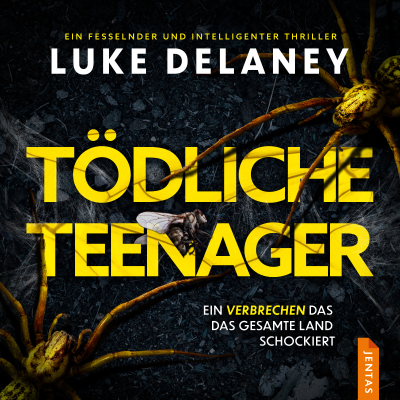
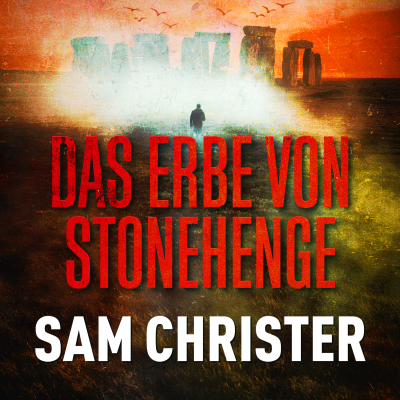


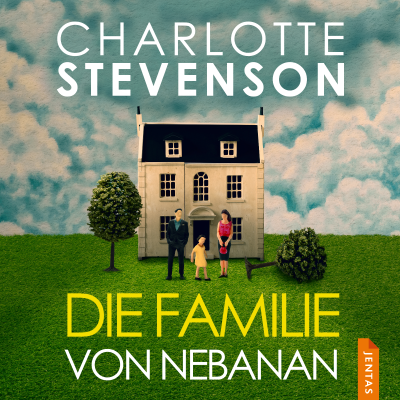
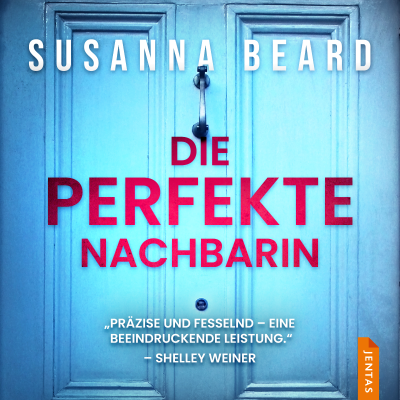




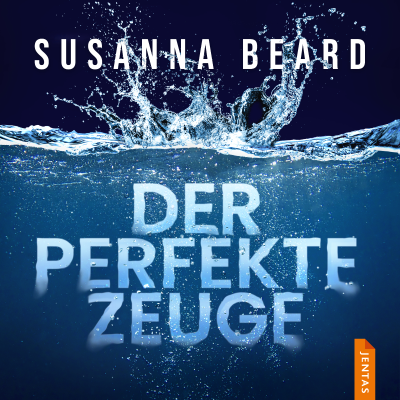

![Schöne falsche Welt [ungekürzt]](https://cdn.podimo.com/images/94ef5516-5cad-447c-a77c-763337e12a35_400x400.png)